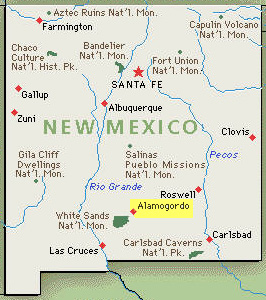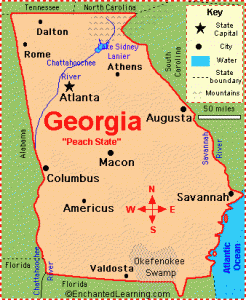

For the past 16 years Cheryl Jones, VP, Account Executive, has fought relentlessly to help UST thrive. Responsible for all of the personal sales contacts, new business partnerships with state and national nonprofits, and the continued growth and success of the Trust, Cheryl works closely with Donna Groh, the Board of Trustees, and the 75-plus Sponsors that help make sure nonprofits across the country aware of their choices when it comes to funding unemployment.
“I’ve been in the insurance industry for more than 25 years and I jumped at the chance to work with a client whose values I identified strongly with,” explained Cheryl. “I fought hard to make Unemployment Services Trust—which was still HSUT and NNUT—my client and I still love it.
“I have always called UST my ‘Ben & Jerry’s,’ meaning that it’s a great ‘product,’ with great employees which allows you to have a lot of fun at work.”
A frequent traveler for work, Cheryl jumps at the chance to spend time at home relaxing. “I spend so much time traveling for work that when I am home I like to take it easy and be with my friends. I have been very lucky to have traveled to every state and to have met so many interesting people. I used to say that I learned geography by following the Grateful Dead around the country, but really I am thankful every day that I have a job that allows me to go places and meet so many people. I don’t know what I would do if I had to sit at my desk 5 days a week.”
Having completed her dream house in the past couple of years, Cheryl explains, “I would much rather entertain at my house than go out, so I like to use my frequent flyer miles to bring my friends and family out to see me so that I don’t have to get on another plane in my time off.”
Even her perfect weekend revolves around being close to her home, and family and friends. “The perfect weekend would be getting up and exercising then going for a walk or bike ride and having friends over for dinner; if I couldn’t do that though, I would like to be on the water either rafting, boating, snorkeling, walking along the ocean or whale watching.”
Have questions about Cheryl or want to know more about how the UST Operations Team works? Follow #MeetUSTMondays or send us your questions at info@chooseUST.org!

“I really liked the idea of supporting organizations that make a difference,” he explained.
Having served the members of UST first as an Operations Manager and then as the Director of Operations, Adam has been exposed to a whole new side of the nonprofit world while working with the Trust. But his success at easily adapting to a new challenge wasn’t unprecedented—he once had to repair his fuel line with a tire patch kit and electric tape to make it home from a camping trip in Death Valley, California—or unexpected. “I appreciate the feeling that comes with overcoming an unexpected obstacle,” he explains, “and I like having the opportunity to test myself.”
Of his move to UST, Adam recalls, “I was fascinated by the variety of organizations that were members of UST: schools, museums, zoos, assisted living centers, mental health associations, symphonies, hospitals…the list goes on and on. And I realized that my definition of ‘nonprofit’ had been really narrow.”
Taking that newfound knowledge to heart, Adam expanded his volunteer and nonprofit experience by doing work with both Habitat for Humanity and the United Way which allowed him to better “appreciate their focus on the communities that they serve.”
Growing up as part of a Navy family that moved around with his father, a career Navy man, a lot, Adam also supports and admires the efforts of programs like the Wounded Warrior Project because he recognizes the need “to honor and serve those who have sacrificed so much on our behalf.”
“One of my favorite childhood memories is having my dad surprise us by coming home early from a nine-month deployment,” he remembers.
And, in fact, family features prominently in many of his stories.
He often begins stories with “My wife…”, and even goes so far as to tell new Trust employees that she features prominently in many of his stories, so that they know who he is talking about when her name pops up. Similarly, his children feature prominently in his office, with mugs designed by them, pictures, and artwork proudly displayed. And, luckily for them, Adam jumps at the chance to learn with, and teach them something that amazes them… makes for a good story as well.
Have questions about Adam or want to know more about how the UST Operations Team works? Follow #MeetUSTMondays or send us your questions at info@chooseUST.org!

After more than 10 years with UST, Angela—who moved into a newly created position of Customer Service Representative at the beginning of the year—is still excited to talk to nonprofits about UST.
“When I first joined UST I was excited about the program and my involvement in it because it’s a unique way to help nonprofits save money. I love that our purpose is to help nonprofits across the U.S. save on unemployment costs specifically so that their own missions can be furthered!” she remembers.
Always excited to help others succeed, Angela splits her time between school, work, and volunteering at the local schools her daughters go to.
“I’m very social and I like to volunteer when I can. Throughout the year I volunteer at my daughters’ schools and help out whichever way I can, whether that means working as a classroom aide, working at the annual jog-a-thon, or helping out at the snack shack during athletic games.”
And in many ways, her desire to help others comes from early childhood experiences. “I have many fond memories of my childhood,” she says, reminiscing about her walk-in closet that was outfitted with a child-sized grocery cart, all the plastic toy foods you can think of, and a wide array of cabbage patch kids with their matching carrier, diaper bag, car seat, and stroller sets.
“Not all children experience what I had as a child, which is why I feel that it is so important to give back to our community and lend a helping hand to those with less,” she explains.
And while she’s outgrown her cabbage patch kids and the fake plastic food in her closet ‘grocery store’, Angela still loves to bake—especially around the holidays!—and take care of her friends and family. “When I’m not at work or at school, I like to spend my time with family and friends and just hang out. And I make sure to take my bulldog, Chula, on walks on the Bluffs around my house a few times a week so that we don’t forget how lucky we are to live in a place with mountains on one side and the beach on the other!”
Have questions for Angela? Want to congratulate her on the new job? Tweet us at @USTTrust!

“Even before I joined UST as the Executive Director I had known about the Trust from a previous employer and felt encouraged by what we do,” explained Donna of her earliest encounters with UST.
“While I was with my former employer, Holly Smith-Jones, my predecessor at UST, was a board member for the organization I worked at and helped us make the decision to join the Trust. I remember that I liked what UST does for nonprofits, and at the very height of the Great Recession, I saw it as a challenge to join the Trust and take it forward.”
But working with the Trust isn’t the only thing that Donna does. An avid world traveler Donna has been to all continents except for Antarctica—a blemish she hopes to remove from her wayfarer record in 2014 when she will travel from South America down to Antarctica.
When at home with her dog Murphy—a constant companion—Donna enjoys cooking and entertaining. “My daughter is always in charge of cocktails and I am in charge of the buffet.”
Describing her perfect dinner party, Donna imagines an eclectic group of people that would create a great dynamic. “The meal would be catered by Mario Batali who would, of course, also be a guest.”
“I would also invite Abby Wambach, my favorite female soccer player,” Donna said, admitting that while she was a terrible player herself, she was a decent coach.
“Then I would invite Sherlock Holmes because I love the way his mind works, and Jude Law because I like the way he looks. Clive Cussler because of his adventure stories, and David Foster who has created more hit music sensations than anyone else. Bette Midler would round out the group,” she concluded.
Prior to joining UST, Donna was the Executive Director of Toastmasters International and before that Director of Operations & Business Development for the American Association of Critical-Care Nurses. Previously she served as Vice President/COO of the Irvine Medical Center. She has a BS and Master’s degree from the University of Pennsylvania in Philadelphia and has completed coursework for an Ed.D in Organizational Leadership from Pepperdine University.
If you have questions for Donna, or want to know more about how the UST team works, follow our hashtag (#MeetUSTMondays) or send us your questions on Facebook, LinkedIn, or Twitter!

One month in…and I officially get to introduce myself for Meet US(T) Mondays!
When I first got involved with UST, I was ecstatic to help nonprofits advance their missions. My past two jobs took place at the UCSB Alumni Association and the Santa Barbara Zoo, both nonprofit organizations. Having witnessed firsthand the external and internal good nonprofits can accomplish, I figured UST was a perfect fit for me.
When I’m not working, and when I’m feeling productive, I love to bake, cook, hang out with friends, and go on beach-side runs. However, since I recently sprained my foot, my activities currently include sitting on my couch, watching reality television, and eating…a lot.
Speaking of my favorite subject (aka: FOOD), my favorite meals tend to include Mexican cuisine, pizza, or cheese in general. Since I was basically raised on fast food, my taste buds often reject most vegetables but never stop craving junk food. It’s kind of a curse, but I’m pretty content with my 8-year-old pallet.
However, my childhood didn’t just consist of Taco Bell and Pizza Hut. One of my favorite childhood memories is when my dad surprised me and took me to Disneyland on the rainiest day of the year. Although that sounds like hell to most people, the empty park, matching ponchos and endless rides on Splash Mountain made it completely unforgettable.
A close second favorite memory also takes place at Disneyland. At 5 years old, and my first visit to the park, I finally got to see Mickey…and then proceeded to knock him over in the hugging process. In fact, my family still greets me as “the girl who knocked over Mickey Mouse.” Which brings me to my next point; if I were a circus star, I would have to name myself Klutzo the Magnificent.
After breaking 4 bones (on 4 different occasions), knocking over Mickey Mouse, and rolling my ankle at my college graduation, one could make the argument that I have klutzy tendencies. And even though that’s probably true, it hasn’t stopped me from living my life to the fullest.
Want to share your clumsiest stories with me? Tweet me @USTTrust with the hashtag #MeetUSTMondays.

Sick employees are bad for business – plain and simple. They can wreak havoc on the workplace in many ways – spreading germs, putting additional stress on co-workers who have to pick up the slack or even creating tension amongst the team. While it might seem great to have such dedicated employees who are willing to work even when they are ill, what might be a mild case of the flu for one can land another in the hospital or worse, put multiple members of your team out for weeks.
You need an equitable sick leave policy in place that provides employees a reasonable amount of paid sick leave, allowing them the time to recover when they’re not feeling well. Additionally, having a clearly written policy that specifies the organization’s standards and what is expected of the employee will help to minimize sick leave abuse. Paid sick leave is not typically required under federal law but may be required under state law – different states have different requirements so make sure to do your research to determine what, if any, state laws are applicable to you.
By implementing a few simple guidelines, you can create a solid yet thoughtful sick day policy that helps to maintain a healthier workplace and keep your nonprofit running smoothing when someone is out. First and foremost, you need managers to not only encourage people to stay home when they are ill but to also stay home themselves when ill – leading by example is the most powerful tool managers have at their discretion.
Secondly, have a back-up plan in place for when those instances do arise so key tasks don’t go unattended for days at a time. For example, cross-train your staff so that everyone has someone who can fill in where and when needed. While this may not be an ideal situation for some, ensuring everyone understands the benefits of such a plan and knows what to expect ahead of time, can go a long way in eliminating some of the stress when the need presents itself.
Also important to keep in mind, while it’s not practical to have someone out of the office for weeks due to a general cold, it is wise to require employees who have been out with the flu and/or a fever to remain home until they’ve been symptom-free for at least 24 hours. This will ensure they are no longer contagious and getting others sick upon returning to work.
If an employer doesn’t offer sick leave, they will only accelerate health issues and the spread of illness, thereby lowering productivity and office morale. Remember, when an employee comes to work sick, it puts you and the rest of your staff in a weak environment, which can affect a nonprofit as badly as the loss of a major contributor. Being sensitive to the health of all your staff should be priority number one. To ensure you are doing everything you can is to genuinely take an interest in the health of the people working with you. Remember, a healthy workplace is a productive workplace.

What Will Affect My Organization During Unemployment Peaks?
The Number of Employees at your Organization. Since smaller organizations may have made smaller contributions into the state-run UI trust fund, even one benefit claim can have a significant impact on the organization’s future experience rating.
The Filing Date of the Benefit Claim. The filing date of a claim determines the base period which determines the former employee’s wages that will be used to calculate their UI benefit payments. In the majority of states, the base period is the first four of the last five completed quarters worked.
For example, if Sally H. worked for Organization ABC from December 2004 to January 2013, and filed a base period claim in February 2013, your organization would be charged for her UI benefits based on her wages from 4th quarter 2011 to 3rd quarter 2012 (or approximately Oct. 2011- Sept. 2012).
The Amount of Wages the Employee Earned. Like most taxable areas, the higher the wages your former employee earned, the higher UI benefits they’ll receive once approved. And, in turn, the more high wage earners you have with high benefit payments, the faster your organization will see an increase in employer taxes.
The Amount of Benefits Paid to a Former Employee. Whenever employees stop receiving benefits before the full amount runs out—usually because the employee has found a new job and stopped collecting—it positively effects your experience credit and tax charges.
It is important to note however that not all employers are subject to paying unemployment taxes and some, like 501(c)(3) organizations with 10 or more employees, have alternative cost saving options available to them that can help reduce the price of unemployment at their organization. To find out if a better option exists for your organization, contact us at info@chooseUST.org or request a complimentary Savings Evaluation today.
Want more information? Send us your questions on Twitter, LinkedIn and Facebook!
What Will the Unemployment Office Look at When Determining the Eligibility and Cost of a Claim?
The Type of Employer your Organization Is. A few nonprofits are not required to pay unemployment claims under IRS tax code 501(c)(3). But if you have employed four or more individuals in some portion of a day in each of twenty different calendar weeks, in either the current or preceding calendar year, you must pay into the unemployment system, and your employees are eligible for benefits. Regardless of whether you are exempt or not, it is highly encouraged because it provides financial security to your employees should they lose their job through no fault of their own. If your organization is required to pay (or reimburse) the state for unemployment claims, the unemployment office will continue examining the claim to determine the eligibility of your former employee.
The Type of Employee Involved. Not all employee types qualify to collect unemployment benefits. For example, part-time workers or independent contractors may not qualify for unemployment benefits. However, if an employee is misclassified or other errors occur during the claims review process your organization may be held responsible for benefits paid to the former employee.
The Number of Places the Employee Has Worked. If a former employee worked for several employers within the base period*, the charge to your organization—and the effect it will have on your taxes—may be less because it would be split among all of the employers identified in the base period claim.
The Length of Time the Employee Worked at your Organization. The longer an employee has worked at your organization, the more likely it is that your agency will shoulder the brunt (and eventually all) of the base period claim effects.
The Nature of the Employee Separation. Whenever a new benefits claim is filed, the unemployment office determines whether or not a former employee meets eligibility requirements to collect benefits under state law. In some cases, the unemployment office may determine to provide benefits to an employee you don’t think should collect based on the nature of the separating event, and your organization is able to contest these at an unemployment hearing. Proper documentation is crucial to winning the case so you must be prepared, and some nonprofit trusts like UST will even provide you with a case representative to help you with court cases. (Nonprofits who used a hearing representative had a 72.3% win rate compared to 57.4% for employers who did not**).
It is important to note however that not all employers are subject to paying unemployment taxes and some, like 501(c)(3) organizations with 10 or more employees, have alternative cost saving options available to them that can help reduce the price of unemployment at their organization. To find out if a better option exists for your organization, contact us at info@chooseUST.org or request a complimentary Savings Evaluation today.
Want more information? Send us your questions on Twitter, LinkedIn and Facebook!
Missed a Part? Read Part I here. Read Part II here.
* Base period claims are those in which a claim form is sent to EACH employer for which the claimant worked during his base period (usually the first four of the last five completed calendar quarters immediately preceding the beginning of a claimant’s benefit year). So if your former employee is hired for only a short duration by another employer, you both may liable for a portion of their benefits.
** Source: Equifax Workforce Solutions

Aron joined the Unemployment Services Trust in mid-April as a UST Account Specialist and is excited to be working directly with a vast variety of nonprofit organizations. Fittingly, one of his favorite quotes is “Be the change you want to see in the world” which makes him a great addition to the UST team.
Outside of the workplace, Aron enjoys working out and Python coding, a general purpose programming language created in the late 1980’s that is used by thousands of people to do things from testing microchips to building video games. He also does his own shopping and cooking which is fitting since food came up a lot during our Q&A. His favorite holiday is Thanksgiving and not coincidently, his favorite childhood memory involves food – he shared, “it was the first time I was given a whole torta all to myself.”
When asked what TV show his life emulates, he said General Hospital, explaining “Everyone has heard of it and knows about it but no one really knows who’s in it or what it’s about.” An exciting adventure in his life story would be a visit to the Nurburgring Race Track in Germany where high performance cars are tested for speed but open to the public for those with an adventurous side – a place Aron has wanted to visit for some time.
Help us in welcoming Aron to the team via Twitter @USTTrust or Facebook @ChooseUST with the hashtag #MeetUSTMondays!

This option, which has been available exclusively to 501(c)(3) organizations since 1972, allows nonprofits to stop over paying into their state tax-rated system and offers substantial long-term savings for those employers who choose to become direct, or self-, reimbursing agencies.
“Our state has increased its costs to most employers so I’m shocked that not all nonprofits are looking at this option,” said one study participant who has already opted out of their state unemployment insurance system.
By opting out of the state tax-rated system, which typically causes employers to pay $2.00 in taxes for every $1.00 in actual benefits that is paid to their former employees, most nonprofits are able to save money and do significantly more with their budget.
“It wasn’t until after my first full year with UST that I started to believe it was not too good to be true. We received our audit and a refund and I thought ‘Wow, we really have a credit here,’” wrote another study participant.
Offering valuable savings in both the short and long-term, opting out of the state system does have several drawbacks for agencies that elect to become direct reimbursing without joining a trust like UST or other program.
“I’m always looking to save money and get more services for my clients,” said one nonprofit HR consultant, “I push the idea of UST for giving them an added resource. [With UST] They’ll have somebody on their side who can help them.”
To read the online press release about the Division’s findings, go here.
All information and quoted materials were pulled from a study conducted at UST, which was released at the end of the 1st quarter of 2012. The study surveyed almost 300 nonprofit agencies to identify key data about how nonprofits understand and utilize their unemployment tax options

Read the previous article here.
Now that their August report is wrapped up, states struggling to rebuild their workforces say they know better than the federal government how to make the most out of the limited amount of workforce development and job training dollars in their own state. In particular, the NGA is asking for an increase in monies allocated to “set-aside” funds from the Workforce Investment Act that states are able to use at their own discretion to explore new approaches to workforce development tailored to their states’ needs.
Read more about what the NGA recommended, and what their critics say to counter the report, at Stateline here.
And tell us, who do you think should control the bulk of workforce development monies: the state, the Feds, or local governments? Share your answers on Twitter, Facebook, or LinkedIn.

by Guest Blogger Barry T. Omahen, CPA, Managing Partner, Lindquist LLP Certified Public Accountants
The American Institute of Certified Public Accountants (AICPA) has issued new standards that may impact your future audit engagement. Statements on Auditing Standards (SAS) Nos. 122–125 (referred to as “Clarified Auditing Standards” or “Clarity Standards”) introduce changes that go into effect for financial statement audits for periods ending on or after December 15, 2012. For most entities, that means the standards will be effective for the year ending December 31, 2012, or later.
Some changes may affect all audit engagements
Certain changes may only apply in unusual circumstances
Some of the benefits of the clarified auditing standards include enhanced communication between your team and your auditors, improved audit quality and increased confidence in the audited financial statements.
These new standards will require auditors to redo much of the system evaluation work and memorandums that they carry forward from one audit to the next. As such, it’s encouraged that you work closely with your auditor to make these changes as smooth and efficient as possible!
For a more detailed version of this article, refer to Lindquist LLP’s website: http://www.lindquistcpa.com/AICPA-Audit-Clarity-Standards-11092012.htm
Barry T. Omahen , CPA, is Lindquist LLP’s managing partner based in the firm’s San Ramon office. Barry specializes in serving the audit, accounting and reporting needs of not-for-profit organizations and employee benefit plans. He serves as the partner in-charge of the firm’s quality control review and audit and accounting practice. He can be contacted at (925) 498-1546 or bomahen@lindquistcpa.com .
Lindquist LLP provides this information for general guidance only. It does not constitute the provision of legal advice, tax advice, accounting services, investment advice, or professional consulting of any kind. The information provided herein should not be used as a substitute for consultation with professional tax, accounting, legal, or other competent advisers. Before making any decision or taking any action, you should consult a professional adviser who has been provided with all pertinent facts relevant to your particular situation. Tax articles are not intended to be used, and cannot be used by any taxpayer, for the purpose of avoiding accuracy-related penalties that may be imposed on the taxpayer. The information is provided “as is,” with no assurance or guarantee of completeness, accuracy, or timeliness of the information, and without warranty of any kind, express or implied, including but not limited to warranties of performance, merchantability, and fitness for a particular purpose.

When seeking a new job opportunity, your goal is for your resume to capture the attention of a busy recruiter and for them to bring you in for an interview. In order for this scenario to take place, you need to understand the day in the life of a recruiter.
Recruiters will receive hundreds, maybe even thousands, of resumes making it quite impossible for them to go through each one. The line-by-line method is difficult to achieve when receiving such a large volume of resumes, as there just isn’t enough time in the day. In the nonprofit sector, this can pose as an even bigger challenge. With some nonprofits not having a designated HR team—maybe one HR employee at most—this can make reviewing resumes very time consuming and burdensome.
When a recruiter is reviewing a resume, his or her eyes are moving down the page in a Z-pattern—left to right all the way down. They’re looking for certain key terms that relate to the job they’re trying to fill. This first pass is called the Six Second Skim Test. If a recruiter comes across what he or she is looking for in that first pass, your resume will likely get a shot at a more in-depth resume review. And, if they still like what they see, you might even get a phone call asking you to come in for an interview.
In order to pass the six second skim test, formatting can make all the difference. Showcasing your key skill sets and keywords that relate to the job for which you’re applying, can make you stand out from the rest. Adding these simple key changes can significantly improve the chances of your resume getting noticed.
Nonprofit organizations have to use their time as efficiently as possible, making this six second skim test a useful tactic to incorporate when recruiting and hiring future candidates.
If you don’t know the answer to both of these questions, it might be time to take a look at how traditional job evaluations are giving way to salaries that are now based on market pricing and a little flexibility.
Turning away from traditional job evaluations that looked at job ranking, job classification, point factor, and factor comparison, many newer job evaluation tactics take into account the fact that people are more fluid in their careers and no longer care how their job is evaluated—so long as they’re being paid fairly. New salary determination methods also take into account that you should never pay more than the job is worth to you.
For nonprofits, especially those where employees give their all to change the status quo and to make a difference for your mission determining salary scales based on market pricing might not be a bad idea.
But nonprofit market pricing doesn’t always compare to the for-profit side where employees may have an easier time paying off their cars, homes, and bills, as well as enjoying that extra dinner out and more vacations.
When you’re ready to set salaries for your nonprofit staff, make sure that you (and Human Resources) know:
After determining those, it’s time to evaluate the pay structure of your nonprofit employees using a base job salary and base area salary.
Because more jobs are opening up in the for-profit sector—jobs that can often afford to pay employees higher salaries with better benefits and more stability—it’s important that you take into account more than just what job surveys suggest is a fair salary range. Consider questions that look at your employee’s health and happiness while doing this—i.e. would $1500 a month pay the rent or mortgage for your volunteer manager? Would they be able to afford their base bills too? Or would they be left commuting long hours because they couldn’t afford area rent? Do you know how that would affect your agency?
State economic development offices and regional development agencies can help provide up-to-date and accurate state and regional pay information that can then be broken down by skill level and neighborhoods. The U.S. Department of Labor maintains a similar database that can help you determine fair pay scales for your employees.
Your best resource is always other area nonprofits though. Although they might not cover the same mission that you do, other nonprofit employers can help you determine if your pay scale is fair. All you have to do is ask a few of the right questions!
Consider asking these questions in addition to those you think of on your own:

Utilizing State-Specific Unemployment Claims Administration, UST Participants Save More than $26.2 Million on Unemployment Claim Costs.
Founded by nonprofits for nonprofits— UST, a program dedicated to helping nonprofits reduce paperwork burdens and protect assets, today announced it has identified $24,950,103 in unemployment cost savings plus an additional $1,259,711 in errors that are refunded to UST participants.
For 35 years, UST has been helping 501(c)(3) organizations exercise their exclusive nonprofit tax alternative, as allowed by Federal law, to pay only for their own unemployment claims which can save them thousands annually. Because they are no longer subsidizing for-profit companies in the state tax system, and are receiving expert claims guidance, UST members can efficiently manage their unemployment claims while mitigating liability.
UST participants are able to efficiently combat improper unemployment claims, meet important deadlines and prepare for claims hearings by utilizing their state-specific claims representative—helping them to avoid costly penalties while offsetting the administrative headache. UST’s claims administrator equips more than 2,200 participating nonprofits with the guidance and resources they need to confidently manage their claims process.
“Being in the nonprofit sector, employee bandwidth and funding can often be stretched thin and UST is able to provide its members with significant funds in these times of need,” says Donna Groh, Executive Director of UST. “Helping to filter this money goes right back into the nonprofit community—strengthening the missions’ of nonprofits—is what the UST program is all about.”
Whether you’re a tax-rated or reimbursing employer, UST can help protect your funding and simplify your claims management processes. If you’re a 501(c)(3) looking for ways to help your nonprofit save money for 2019, benchmark your unemployment costs by filling out a free Unemployment Cost Analysis form by November 15.

By categorizing an organized nonprofit sector to include the number of nonprofits per capita in each community and the degree to which nonprofits directly engage local residents, the study, “Civic Health and Unemployment II: The Case Builds,” presented three key findings:
Further emphasizing the importance of an organized nonprofit community that is involved with those in the local area, the study suggests that while nonprofits directly contribute to a lower unemployment rate by creating jobs, there also appears to be a ripple effect in which organizations that engage with local residents create a change in the local unemployment rate.
Released by the National Conference on Citizenship this study may well become highly influential for those who most often are called upon to discuss the importance of establishing strong nonprofit sectors. And although it doesn’t offer all the answers as to why organized, involved nonprofits are able to directly impact unemployment rates, there will undoubtedly be more information to come in the next few months as the unemployment rate continues to trend downward.

Like many states desperately trying to save their funds from insolvency, legislators in New Mexico passed a bill last year that would have slashed unemployment benefits and hiked the premiums businesses still in the tax-rated state system would have to pay. Martinez, however, eliminated the higher premiums and signed a new bill this year that approved lower rates through 2013.
Senator Gerald Ortiz y Pino (D- Albuquerque) is warning, though, that the state will soon have to borrow from the federal government at a high interest rate because employers only paid $197.8 million into the fund last year. And with more than 40,000 employers drawing from the fund, the remaining $60 million won’t go far.
For nonprofit agencies still in the state system, there are other options, such as leaving the state to join a Trust, like the Unemployment Services Trust (UST), that can help save more money and gain greater predictive control over yearly budgeting.
In fact, New Mexico nonprofits that leave the state system and join UST save an average of $3,483 a year.
To learn more about your opt out alternatives, visit http://www.chooseust.org/501c3-unemployment-alternatives/ or sign up for the an upcoming Exclusive Nonprofit Savings webinar.
Read the full Albuquerque Journal article here.

Three questions—questions that could be solved with a simple ‘yes’ or ‘no’—determined who could, and who could not, collect unemployment benefits.
In recent years though, the question of which employees deserve to be able to collect has become a much more complicated topic as budgets have been restricted and more and more jobless workers apply for unemployment benefits.
But now, another complicated topic of discussion has arisen: Should millionaires that meet all other standards be allowed to collect unemployment insurance benefits?
First debated on the Senate floor after a Congressional Research Service report revealed that almost 2,400 people with annual household incomes topping $1 million, and another 954,000 with incomes topping $100,000, received unemployment insurance benefits in 2009 the question has received shocked attention.
While these groups only make up 0.08 percent of the 11.3 million U.S. tax filers who reported unemployment insurance income in 2009, the report was released after about 1.1 million people exhausted their jobless benefits during the second quarter of 2012. The timing of the release served to further drive home the importance of finding a long term solution for state unemployment insurance trust funds, many of which have run low, as another 4.6 million jobless workers filed for benefits.
As the nationwide jobless rate continues to remain around 8 percent, and more jobless benefits run out, the question of who collects unemployment benefits must be definitely answered. But, what other questions will the answer reveal?

Over the years, nonprofits have become more willing to incorporate different elements of technology into their organization—encouraging growth, utilizing the strengths of a smaller bandwidth and increasing brand awareness across multiple channels. Technology has opened many doors for nonprofits along with offering new approaches to communication with their target audience and encouraging more community-driven efforts. However, nonprofits tend to have a difficult time with incorporating an innovation with the technology element—the two don’t always see eye to eye.
An effective innovation may not always require your organization to spend a large sum of money in order to make it work. To find success in your innovation, nonprofit leaders need to realize innovation can be a risk, however knowing some of the issues that your organization may face can better prepare you when applying a new technology. And because of budget restraints, innovation tends to happen less creating certain limitations on what can be done.
Often times, nonprofits receive free or discounted software, however some hesitate to take the time or to make an investment into the initial set-up, continual maintenance or the training of staff on how to use the tool. This tends to cause more problems than offering any actual benefit to the organization. Incorporating new forms of technology can offer some economical approaches for organizations that can help them avoid major setbacks and offer effective implementation for certain tech tools.
While bringing on new forms of technology has it’s challenges, there are some ways to combat these issues and make it worth your time and money. First, having an actual plan in place can help you better understand the needs you want to meet and meet deadlines within your timeline. Second, while a tool may be free, it may not be the best fit for what your organization needs. Finding a tool with a better value will be more beneficial in the long run, even if it costs a little more money. Lastly, be sure to set aside time to train your staff on how to properly use the tool—expecting your staff to just figure it out can lead to frustration or the possibility for future errors.

The Internal Revenue Service (IRS) has begun its efforts to collect on Affordable Care Act (ACA) penalties by issuing Letter 226J to non-compliant businesses. There’s a chance you may have already received one of these letters.
With only 30 days to dispute the letter, having an action plan in place and ready to go is critical in order to protect your organization from costly penalties that could soar into millions of dollars.
Presented by Equifax, the market leader in ACA management, this on-demand webinar reveals best practices for responding to Letter 226J as well as when and how to submit a dispute. You’ll also gain a better understanding of why you received Letter 226J and how the IRS assessment was calculated.
Ensure your nonprofit is equipped with a plan should IRS Letter 226J arrive in your mailbox and watch the on-demand recording today!
This webinar series is part of UST’s efforts to educate the nonprofit sector. For more learning opportunities, tips and legal updates just for nonprofits, sign up for our monthly e-News today!

But many nonprofits put relationships with employees at a lower level of importance than relationships with donors and other funding sources. Ultimately this common mistake undermines the entire organization and detracts from your mission because it creates a counterproductive work environment.
To begin fixing these botched relationships, and celebrating your employees for who they are and what they do, we’ve put together the top 3 things NOT TO DO.
1. Playing favorites: We all know you have favorite employees. Whether they’re your top performers, best friends, or just people you really like for the job, don’t treat them any differently than you treat the rest of your employees.
Better yet, treat the rest of your employees the same way you treat your favorites.
2. Not giving employees a forum for voicing suggestions: If you want employees to know that they’re valued members of your organization encourage them to make suggestions to improve your operations or the way that their job is handled.
More importantly, take the time to recognize and implement the best suggestions. This will motivate employees to improve working processes and implement new activities.
3. Lack of communication with employees: Open and easy communication helps build the strongest relationships within your agency.
However you accomplish it, make sure that you’re present and easy to get in touch with when employees want, or need, to talk.
Connect with us on Facebook, on Twitter @USTTrust, or on LinkedIn and tell us what other things you would add to the list.

Like many states desperately trying to save their funds from insolvency, legislators in New Mexico passed a bill last year that would have slashed unemployment benefits and hiked the premiums businesses still in the tax-rated state system would have to pay. Martinez, however, eliminated the higher premiums and signed a new bill this year that approved lower rates through 2013.
Senator Gerald Ortiz y Pino (D- Albuquerque) is warning, though, that the state will soon have to borrow from the federal government at a high interest rate because employers only paid $197.8 million into the fund last year. And with more than 40,000 employers drawing from the fund, the remaining $60 million won’t go far.
For nonprofit agencies still in the state system, there are other options, such as leaving the state to join a Trust, like the Unemployment Services Trust (UST), that can help save more money and gain greater predictive control over yearly budgeting.
In fact, New Mexico nonprofits that leave the state system and join UST save an average of $3,483 a year.
To learn more about your opt out alternatives, visit http://www.chooseust.org/501c3-unemployment-alternatives/ or sign up for the an upcoming Exclusive Nonprofit Savings webinar.
Read the full Albuquerque Journal article here.

You’ve already tightened your belt. But now constrained public funding and highly competitive government grants are making sustainability harder than ever for nonprofits, especially those in the human services sector. We think this recent article from the Stanford Social Innovation Review is a great read for nonprofits suffering from funding cutbacks. The article provides guidelines on how to stay afloat during these times, including these five ideas:
1) The importance of strategic clarity and the steps your organization should take to focus on priorities
Nonprofits across the globe offer a wide variety of services. Defining how, where and with whom you have an impact will assist you in finding your niche, and also help you with your funding efforts. From here, nonprofits should define how much it costs to provide each service offered by the organization so you can seek the proper funding needed to keep the program afloat. This allows the agency to locate areas of service that may be altered if funds are lacking and show what areas of the service would benefit the most if funding were increased. Also, focusing on strategic clarity aids the organization in decision making and how you can pursue opportunities for government funding.
2) Diversifying government support streams and how to manage a strapped funding environment
Organizational sustainability is of the utmost importance, so it is imperative that organizations not have all of their funds coming from just one source. Allowing funds to funnel in through multiple sources (government agencies, state programs, donors) can help your organization remain stable amid declining revenues. Nonprofits may consider offering services in different locations or offering their services to others who may benefit from them (for example, offering services for children with behavioral disorders in a school setting, to children with behavioral disorders in foster homes). Organizations can also take contracts that may not cover all of the costs involved with a particular service if there is potential for making up the difference in community support.
3) Improving productivity, efficiency and effectiveness
A notable difference between the for-profit and nonprofit market place is that nonprofit organizations rarely get to name their price when trying to earn a contract. And, since the funds provided don’t always cover the costs required to carryout the work needed, nonprofits find themselves trying to work more efficiently and effectively in order to preserve funds for the future. Many organizations are becoming more tech-savvy and investing in technologies that streamline job processes and free up valuable man hours so they can focus more on “big picture” tasks.
4) Measuring outcomes and utilizing reports to drive internal learning
Many times, nonprofit organizations generate reports to show the results of their efforts to external parties in order to prove they are satisfying funder requirements, government expectations, etc. Measuring outcomes can be a valuable tool in educating internal associates of program productivity and how certain aspects of those programs can be tweaked in order to improve results. Measuring outcomes can also show whether or not a certain program is producing its intended results, ultimately aiding in overall organizational sustainability.
5) Moving beyond “vendorism” and viewing government decision makers as customers
When nonprofit organizations work with government decision makers, keeping in mind that the government is the buyer and the nonprofit is the seller, nonprofits can better position themselves to mold the government’s request for proposals. As Patrick Lawler, CEO of Youth Villages, stated, “We find out where the leadership’s biggest needs and challenges are, and then look at what services we have that can help them solve the problem. We look over every word in new state budgets and the statements made by the governor or head of child welfare services, and put together a plan for how to address the needs identified.”


For you, answering these questions is critical to creating an invested workforce that sparks the creativity and drive that your mission thrives on. Answering the questions also gives employees a sense of who they are and where they fit in your agency, which leads to more productive, and innovative, workdays.
Answering these questions is only part of a strong employee retention policy though. What other steps do you take to keep employees engaged and excited about your nonprofit?

– Interview Available-
Santa Barbara, CA (April 18, 2013) – In an effort to reduce potential penalties for its nonprofit employer members, the Unemployment Services Trust (UST) has launched several new efforts and technological tools to help address what is being called the federal “UI Integrity mandate.”
Passed as a part of the Trade Adjustment Assistance Extension Act of 2011, the Unemployment Insurance (UI) Integrity mandate requires all employers to provide a complete and timely response to the state’s first request for information about an unemployment claim. Designed to address one of the biggest weaknesses of Unemployment Insurance (UI) funds nationwide—the persistence of unemployment benefits paid in error, which are have cost $10.3 billion in the last year—the UI Integrity Act requires full compliance from all states no later than October 21, 2013. As of today, 5 states (NE, OK, MS, IL, and WV) have enacted legislation with 6 additional states (CA, UT, NM, SD, MN, and NC) passing legislation to be enacted in the coming months. 12 states (WA, OR, ID, MT, WY, CO, AZ, ND, IA, LA, KY, and VA) have pending legislation. The remaining states have yet to take any action to meet the federal deadline.
To ensure that the reform yields the necessary savings, there will be penalties on employers for non-compliance. Any employer that fails to provide a complete and timely response to a claim loses any hope of relief from charges attributable to that claim—even if the employer ultimately wins the claim.
Further, if the state identifies a pattern of failure to provide complete and timely responses, negligent organizations and their claims administrator are at risk of permanently losing valuable protest rights and/or facing monetary penalties.
To address these new liabilities, the Unemployment Services Trust (UST), which helps more than 2,000 nonprofit employers nationwide to reduce the cost of unemployment claims, is conducting regional seminars and state-specific webinars for its members. Through its partnership with Equifax Workforce Solutions (WS), UST’s educational opportunities will allow its nonprofit members to examine how changes to the national UI integrity laws will affect them and to gather helpful tips to improve overall win ratios when protesting improper claims. On average, this type of diligence reduces an employer’s claims costs by 15% each year.
In addition to the seminars and webinars, UST’s nonprofit members now have access to a unique unemployment claim dashboard called CaseBuilder, which was launched by WS earlier this year. “This online dashboard will allow organizations to gather and submit documents and details in a fast, secure environment for all stages of the unemployment process,” reports Workforce Solutions. Current members who utilize CaseBuilder have significantly increased their ability to comply with state requests in a timely manner—which will be extremely pertinent as states begin to integrate UI Integrity legislation into their practices.
Finally, members of UST are already reaping the benefits of “SIDES,” the State Information Data Exchange System that 24 states have implemented, with more scheduled throughout 2013. SIDES is a secure, paperless system which allows UST members and their claims administrator WS to better provide necessary details and documentation at the time of an initial claim filing. Here is how it is helping UST member organizations:
“All employers will be on the hook to respond to every unemployment claim, every time,” says Donna Groh, Executive Director of UST. “We’re trying to establish best practices that ensure our member nonprofits are ahead of the curve—so they can avoid penalties down the road.”
About UST: Founded by nonprofits, for nonprofits, UST is the largest unemployment trust in the nation, providing 501(c)(3) organizations with a safe, cost-effective alternative to paying state unemployment taxes. Equifax Workforce Solutions (WS) is UST’s partner to provide members with claim administration, audits of state charges, and hearing representation if a member’s claims protest goes to court. They also provide educational seminars and training materials to UST member agencies throughout the year. Visit www.ChooseUST.org to learn more.

For nonprofits, this isn’t the worst of the news.
After falling below 9 percent in April for the first time in more than 3 years, the rate has begun a steady climb upward again, negatively affecting nonprofit employers throughout Georgia by simultaneously increasing cost and need. Compounded by the state’s depleted unemployment insurance trust fund and an outstanding loan balance of more than $742 million that is still owed to the federal government, nonprofits are facing a higher possibility increased unemployment taxes in 2013.
Because Georgia quickly depleted its unemployment insurance (UI) trust fund, the struggle to provide benefits has hurt employers and jobless workers as the state has made large cuts to benefits and steeply increased the overall unemployment costs paid by employers.
Further adding to the coming financial strain, the interest on the federal unemployment trust fund loan cannot be paid from the unemployment tax fund and must instead be paid from other state revenues, causing further financial stress for legislators.
To pay it, the Georgia legislature passed SB 347 earlier this year, which, in addition to cutting jobless benefits and increasing unemployment benefits paid out by employers, includes provisions to:
While this legislation makes Georgia one of 11 states that have cut jobless benefits in the past year by reducing the duration and level of payouts and by restricting eligibility, the legislation may ultimately harm nonprofits specifically as it forces unemployed workers to turn to nonprofits for aid, while also increasing the amount that agencies must set aside to pay for unemployment costs of their own.
For nonprofit organizations still in the state tax system, there are other options available though. Since 1972 nonprofit employers have had the exclusive ability to opt out of the state system and reimburse directly the dollar-for-dollar costs of only their own unemployment costs.
By safely leaving the state’s pooled liability system and paying only for their own unemployment costs, many nonprofits- particularly those with 10 or more employees- can save up to 50 percent off of their UI taxes and gain greater predictive control over yearly budgeting. In fact, Georgia nonprofits that leave the state system and join UST save an average of $14,321 a year.
Learn more about your nonprofits money saving alternatives, or sign up for an upcoming webinar to learn how UST can help your nonprofit reduce SUI costs.

The system is far from perfect though.
For instance, the system is intrinsically flawed for many nonprofit employers who face little to no job-turnover and who remain a part of their state system. Featured in a recent report, the North Carolina UI system has provided one of the strongest examples of why eligible 501(c)(3)’s should consider opting out of their state UI system, as allowed by federal law.
After borrowing more than $2.4 billion from the federal government to meet their UI responsibilities after their UI Trust Fund became insolvent during the Great Recession, North Carolina has begun leveraging their high interest payments on state UI participants.
Like many states which were unable to meet their UI obligations, the burden of reimbursing the federal government for the full loans falls on all employers within the state, whether or not any of their former employees are currently collecting unemployment benefits.
No state reached insolvency overnight though.
Long before the recent recession, states resisted “indexing” or raising their unemployment taxes from year to year. Things were good, the economy was stable — why should they make adjustments? But while employers enjoyed low taxes, in the long run they were being set up for a much bigger fall in the future. And that’s when the Great Recession hit. Not only had states failed to maintain an adequate UI cushion, employers would be double-hit by the recession in having to lay off workers to cut costs, and then pay higher unemployment taxes as a result. According to a 2010 Government Accountability Office report, “Long-standing UI tax policies and practices in many states over 3 decades have eroded trust fund reserves, leaving states in a weak position prior to the recent recession.” Not that states weren’t warned. Even in North Carolina, the Budget and Tax Center reports that it “conducted a thorough analysis of the unemployment insurance system in March 2007, before the start of the Great Recession, warning of the long-term unsustainability of the system as implemented and suggesting reforms.”
More than ever, systems today must be built that can better weather economic downturns and large, prolonged layoffs. Adequate funding levels must be re-attained so that states rely less on the federal government for funding support to meet benefit payments. A system must also be built which maintains its ability to support the economy with wage-replacement levels that are adequate in supporting workers seeking work.
While innovative programs must continue to be introduced to help place jobseekers in new positions, an overhaul of many state UI systems would better support nonprofit employers who remain in their state tax-rated UI system whether they are too small to opt out, or if they feel safer in the state system.
However, because 501(c)(3)s have the exclusive right to opt out of their state UI system in favor of becoming a reimbursing employer that pays directly for former employees’ UI costs, many already experience a greater savings because they aren’t paying for the state’s interest on federal loans, or subsidizing larger employers’ UI costs.
UST releases a new eBook, focused on helping nonprofit organizations create a workforce to stand apart in a competitive job market.
Founded by nonprofits for nonprofits, UST publishes an eBook that reveals the latest best practices that can help nonprofits find and retain employees that fit their organization’s culture, mission and values. This resourceful eBook provides ideal strategies nonprofits can utilize when tackling a competitive market and juggling the many organizational challenges that comes with maintaining a dynamic workforce.
The eBook, “Competitive Hiring Practices That Empower Nonprofits,” reveals that “56 percent believe their current job is only a temporary stepping stone to something better.” However, with the right tools in place nonprofits will be able to offer their employee’s professional development while creating a nurturing base where talented people can grow, feel challenged and valued.
“Hiring the best-fit personnel can be demanding of your time, energy and resources”, explains Donna Groh, Executive Director of UST. “This eBook offers the critical tools organizations need to draw in and maintain best-fit professionals that can help carry out mission-driven initiatives.”
With recent survey data and nonprofit employment trends, UST is able to provide nonprofits with six proven strategies to develop and maintain a thriving workforce.
The eBook, now available for free download, also offers:
Be sure to download your complimentary copy today!

UST maintains a secure site. This means that information we obtain from you in the process of enrolling is protected and cannot be viewed by others. Information about your agency is provided to our various service providers once you enroll in UST for the purpose of providing you with the best possible service. Your information will never be sold or rented to other entities that are not affiliated with UST. Agencies that are actively enrolled in UST are listed for review by other agencies, UST’s sponsors and potential participants, but no information specific to your agency can be reviewed by anyone not affiliated with UST and not otherwise engaged in providing services to you except as required by law or valid legal process.
Your use of this site and the provision of basic information constitute your consent for UST to use the information supplied.
UST may collect generic information about overall website traffic, and use other analytical information and tools to help us improve our website and provide the best possible information and service. As you browse UST’s website, cookies may also be placed on your computer so that we can better understand what information our visitors are most interested in, and to help direct you to other relevant information. These cookies do not collect personal information such as your name, email, postal address or phone number. To opt out of some of these cookies, click here. If you are a Twitter user, and prefer not to have Twitter ad content tailored to you, learn more here.
Further, our website may contain links to other sites. Anytime you connect to another website, their respective privacy policy will apply and UST is not responsible for the privacy practices of others.
This Privacy Policy and the Terms of Use for our site is subject to change.
UST maintains a secure site. This means that information we obtain from you in the process of enrolling is protected and cannot be viewed by others. Information about your agency is provided to our various service providers once you enroll in UST for the purpose of providing you with the best possible service. Your information will never be sold or rented to other entities that are not affiliated with UST. Agencies that are actively enrolled in UST are listed for review by other agencies, UST’s sponsors and potential participants, but no information specific to your agency can be reviewed by anyone not affiliated with UST and not otherwise engaged in providing services to you except as required by law or valid legal process.
Your use of this site and the provision of basic information constitute your consent for UST to use the information supplied.
UST may collect generic information about overall website traffic, and use other analytical information and tools to help us improve our website and provide the best possible information and service. As you browse UST’s website, cookies may also be placed on your computer so that we can better understand what information our visitors are most interested in, and to help direct you to other relevant information. These cookies do not collect personal information such as your name, email, postal address or phone number. To opt out of some of these cookies, click here. If you are a Twitter user, and prefer not to have Twitter ad content tailored to you, learn more here.
Further, our website may contain links to other sites. Anytime you connect to another website, their respective privacy policy will apply and UST is not responsible for the privacy practices of others.
This Privacy Policy and the Terms of Use for our site is subject to change.
By allowing nonprofits to connect directly with potential board members, Board Connect, a project of the Social Impact division of LinkedIn, aims to help you build a stronger Board of Directors that bring the ideal set of skills and expert knowledge to every nonprofit organization.
While it is only available to a select group of nonprofit organizations at this time —notably those in the fields of social entrepreneurship and education leadership— LinkedIn has dedicated a lot of time and energy to ensuring that the program is a success.
For instance, the Board Connect program provides nonprofits with free access to Talent Finder, one of LinkedIn’s premium accounts focused on finding top candidates across the site, access to an exclusive educational webcast, and an invitation to join the Board Connect Group. While participation is limited to registered U.S. nonprofits, the new program will help better connect the right people—with the right Human Resources, Marketing, and Business experience—to your organization.
Focusing on deepening relationships and cultivating connections by creating a stronger network of connections for your organization, LinkedIn bills itself as the perfect platform to connect with the people and resources every nonprofit needs to accomplish its mission.
What do you think? Is LinkedIn the right online platform to connect nonprofits with potential Board Members?
And, when the program becomes more readily available, will you consider using it to find a new Board Member? Will it significantly change your Board Membership or the methods you use to search for them?
Sign up here.